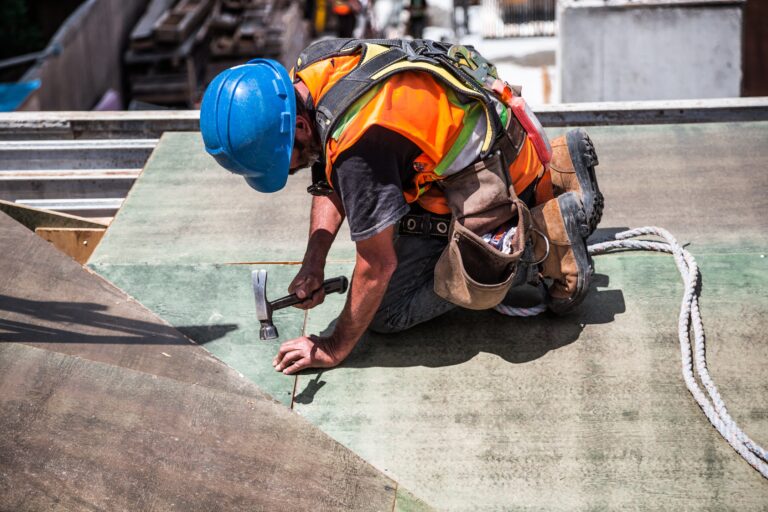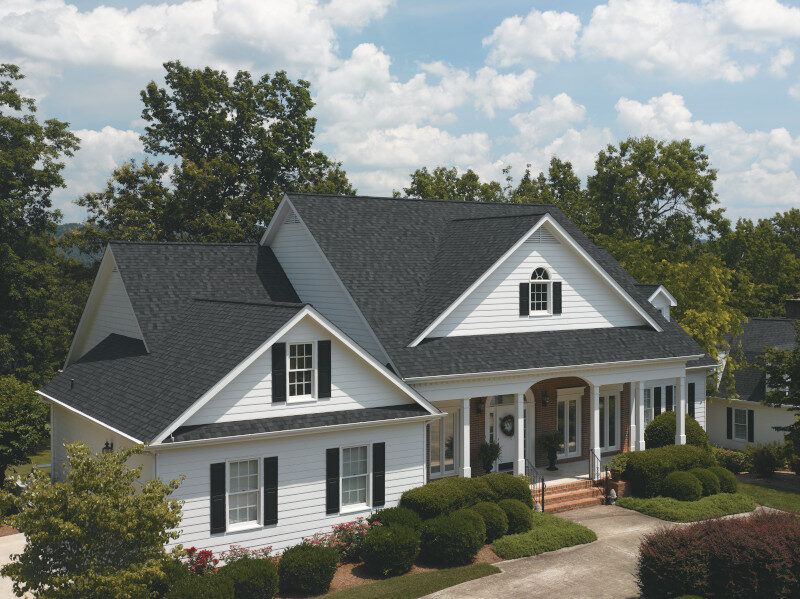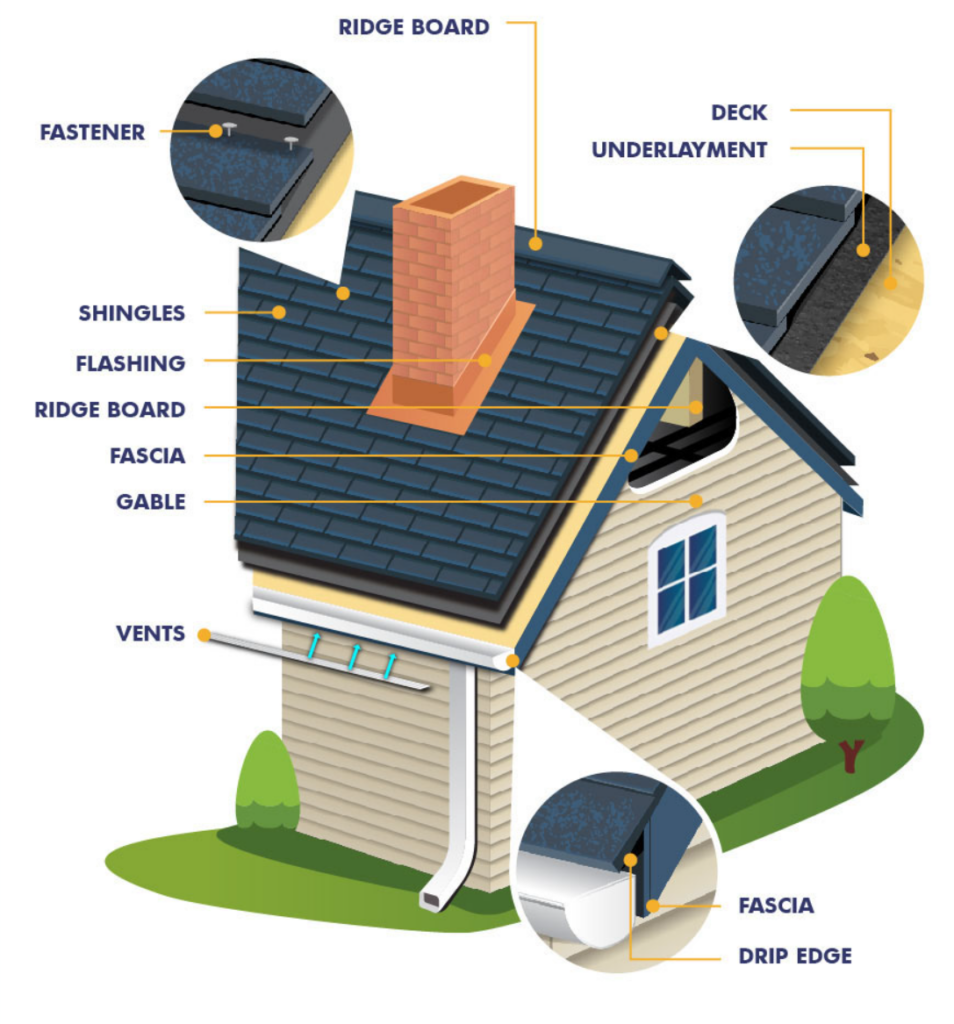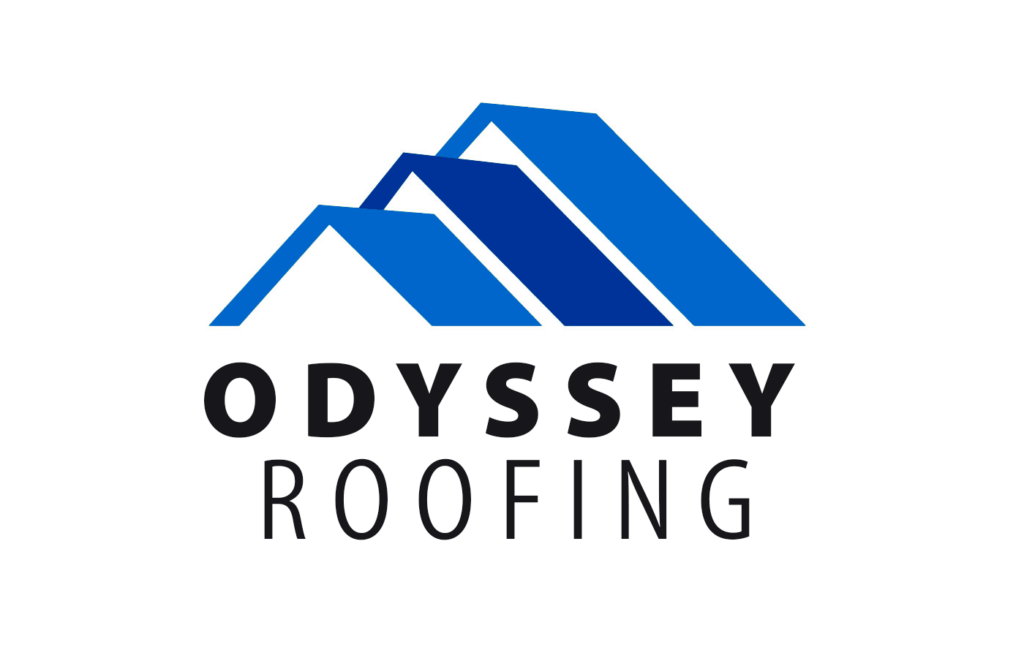A Roof Replacement is More Than Just Shingles

When most people think of roofing, they think of what is seen on the surface – the shingles. Asphalt shingles are the most common roofing material in the United States. Shingles protect your rooftop from the sun, hail and rain, and snow. Shingles also improve the appearance of your home – and high-quality architectural shingles, such as those offered by Odyssey Roofing and CertainTeed, combine high performance with a distinctive look.
Even though shingles are an important part of your roof, a quality roof replacement is much more than just the shingles – it is a complete roof system. Some of the major component parts of a proper roof replacement project – which will be described in more detail – are the roof decking, starter shingles, chimney and roof flashing, underlayment, ice and water shield, outtake, and intake ventilation.
Use a Professional Roofer
First things first – make sure your roofing contractor is professionally licensed and certified by their manufacturer. One of the most important things you can do is to separate fly-by-night roofing companies from professional roofing companies. Your contractor should be able to provide proof of their professional licensing, proof of insurance, as well as references from past customers. Your roofer should give you a copy of these documents with their estimate or proposal, and they should all be up to date-and valid in the state or city where the work is to be done.
Aside from getting quotes and vetting individual roofing companies (and, of course, not choosing the cheapest one), you should expect your roofer to explain their installation process and the materials being used in detail. Weigh how well each prospective roofing contractor explained and answered your questions about the installation. There is a big difference in what you can expect between a roofing contractor who leaves you a quote in the mailbox and one who sits down and meticulously explains how they will put it on your roof.

Starter Shingles
Starter shingles – also referred to as starter strips – are the first layer of shingles at the roof’s edge before the first course of shingles. They are an integral part of a roof system, both aiding your roof’s ability to shed water at the joints and greatly improving your roof’s wind resistance.
Flashing, Drip Edge and Gutter Apron
No matter what roofing material you choose, flashing is one of the most important parts. Flashing should be installed wherever shingles meet brick or stucco – such as around a brick chimney or along a wall. Gutter Apron, which helps rain water run into your gutters, should be installed on all the eaves of your home, and a drip edge should be installed on all your rake. It is crucial that your roof contractor does not reuse your existing gutter apron and drip edge, as this may void warranties longer-duration warranties that come with a quality roof replacement.
Underlayment, Ice and Water Shield
Underlayment is the next layer that goes on after your roof decking is inspected and replaced if needed. There are two main types of underlayment that are applied between the roof shingles and roof deck:
- Ice and water shield, which is waterproof and used around the vulnerable roof deck sections (on the valley, along with eaves, underneath the flashings, and around skylights, chimneys, and vents)
- Synthetic underlayment is a water-resistant material that is applied to the rest of the roof.
Roofs with a 3/12 pitch and above are designed to shed water, not be completely waterproof – so from time to time, water will get through your shingles. Underlayment serves the crucial purpose of being the barrier between your roof decking and water that could damage it in the instances that water sinks through your shingles. For this reason, it is important that the underlayment being used for your roof replacement is a high-quality synthetic that will not get eaten away over time like a builder-grade felt paper variant.
Ventilation, Intake and Exhaust
Your roof has to breathe. With the sun shining down on your home most of the year, the attic can really heat up. There are many different kinds of ventilation that all serve the same purpose; just make sure there’s enough ventilation in your attic to keep your roof healthy.

Hip and Ridge Cap Shingles
These are the finishing touches. The roof peak and any other ridge lines need a different kind of tile or shingle. They not only keep the water out but also help secure the uppermost shingles or tiles layer onto your roof.
Roof Structure and Drainage
Trusses and rafters make up the roof’s structure and are made to support the sheathing. A roof features elements like slope, shape, and layout, which impact your roof’s ability to shed rainwater. Any roof that is below a 4/12″ pitch should use Ice and Water shield on the entire roof deck instead of only the eaves and valleys, while any roof that is below a 2/12″ pitch should not be using shingles at all but instead flat roofing materials.
Proper Attic Ventilation and Insulation
To ensure you have a quality, lasting roof, you need to have a properly insulated and ventilated attic. Balanced ventilation includes having proper roof ridge vents to let warm air out of the attic and installing ventilation under the soffits to let new air enter your home, which results in efficient airflow through your roof system. You also need a well-insulated attic to stabilize the temperature of your house.
Roof Deck
At the base of the roof structure is the wooden deck, another important part of a good roof system since it forms the foundation of your roof and plays an important role in providing proper roof ventilation. An inspection has to be done to ensure that your existing deck is not damaged or rotting. If there are any signs of damage, then a new deck, usually made of plywood, has to be installed.
Wrapping Up
Proper attention to detail must be applied by your roofing contractor when installing all these components since shingle manufacturers have strict installation guidelines in order to meet warranty requirements. When choosing a contractor for your roof replacement project, make sure they are able to explain how each of these components will be installed in accordance with the warranty they will be providing you.


